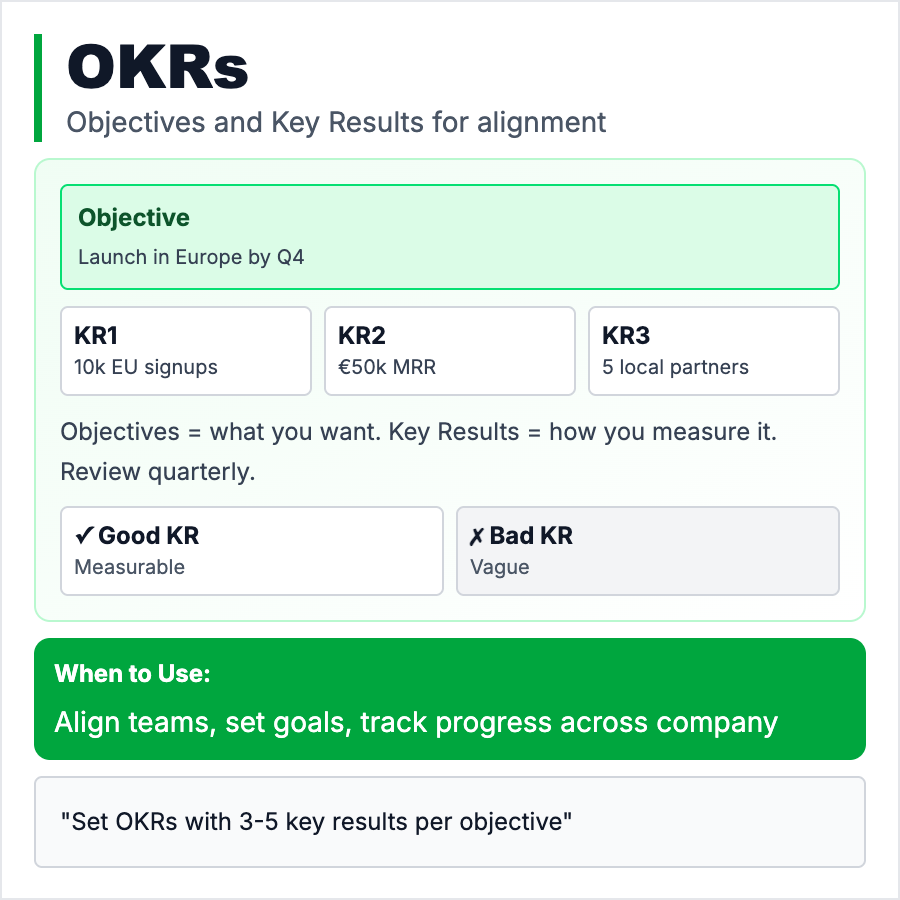
What is OKRs (Objectives & Key Results)?
OKRs (Objectives & Key Results) are a goal-setting framework where you set an ambitious Objective (what you want to achieve) and 3-5 Key Results (how you'll measure success). Think "Objective: Become the go-to tool for designers" with Key Results like "5,000 designers sign up" and "50% weekly retention." Made famous by Google, now used by startups to align teams.
When Should You Use This?
Use OKRs when you have multiple team members and need alignment on what matters, when you're past the chaotic MVP stage and want focus, or when you need to track progress toward ambitious goals. Set them quarterly for agility. Don't use OKRs if you're pre-PMF and changing direction weekly—they work best with some stability.
Common Mistakes to Avoid
- •Too many OKRs—3-5 per quarter max, or you have no focus
- •Sandbagging targets—OKRs should be ambitious (70% success is good)
- •No ownership—every OKR needs a single owner accountable for it
- •Confusing tasks with Key Results—"Launch feature X" is a task, "50% adoption" is a result
- •Set and forget—review OKRs weekly, adjust if you learn something new
Real-World Examples
- •Linear—Objective: Fastest issue tracker. KRs: <50ms response time, 10k MAU, 90% retention
- •Superhuman—Objective: Achieve PMF. KRs: >40% "very disappointed" score
- •Notion—Objective: Grow prosumer base. KRs: 100k users, 20% paying, <5% churn
- •Stripe—Objective: Easiest payments API. KRs: 5min integration time, 10k developers
Category
Product Management
Tags
okrgoal-settingplanningteam-alignmentstrategy